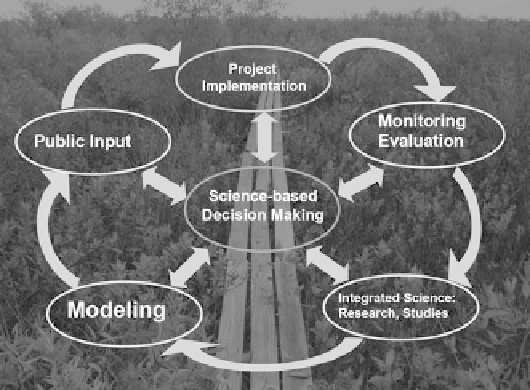Environmental Engineering Reference
In-Depth Information
precarious and ecological restoration is becoming more and more relevant. After
concerns were first expressed by the early environmentalist Marjorie Stoneman
Douglas, the Everglades were given the status as an International Biosphere
Reserve, World Heritage (1979) and protected wetland area, thus, Everglades
restoration has had a long history. The focus of the restoration efforts in the
Everglades has been an ecosystem approach rather than protecting just one desig-
nated geographical area. Such an ecosystem approach of Everglades restoration
must not only respect the particular features of the diverse landscapes, like
hammocks, pinelands, mangroves, freshwater sloughs, marshes and estuarine
habitats, but must also understand how these interactions form patterns and pro-
cesses on the landscape level (Fig.
21.2
).
After much effort, in the year 2000 the Comprehensive Everglades Restoration
Plan (CERP) was approved. The focus of this plan is to care for “restoration,
preservation and protection of the South Florida ecosystem, while providing for
other water-related needs of the region”. The plan aims to spend $10.5 billion over
30 years and combines more than 50 different projects; in this sense it can be
surely called the biggest restoration project, worldwide. The central idea of CERP
is “getting the water right”, which means restoring, as much as possible, the
quantity, timing, and spatial distribution of the historical water flows. Hence,
many projects of CERP are dealing with re-directing billions of gallons of water
daily to enable enhanced water deliveries. Another aim is the purchase of land at
the borders of the current protected natural areas for ecological buffer zones.
Within the whole of CERP, modelling has a central role for science-based decision
making.
Fig. 21.2 Adaptive Management Restoration Approach, where modelling plays an important part.
Background picture was taken on a small vegetation island close to Cape Sable. Board walks like
this are maintained by the Everglades Park Service

